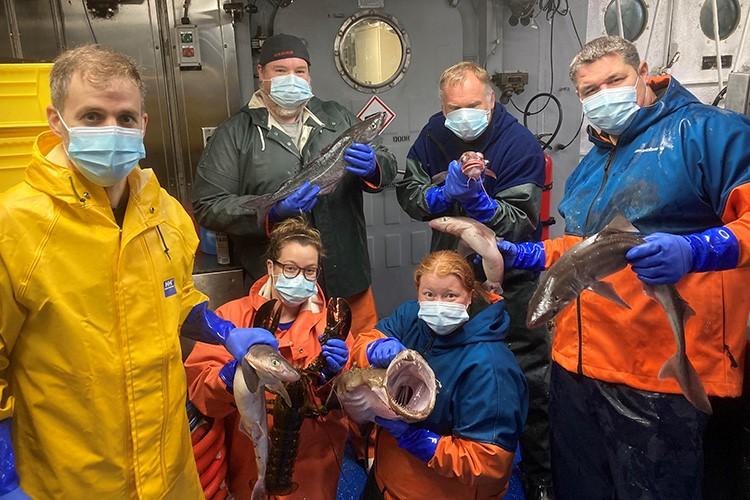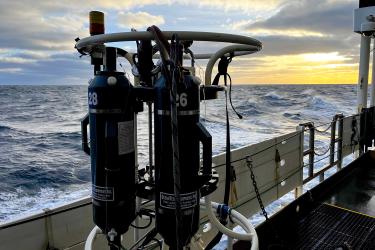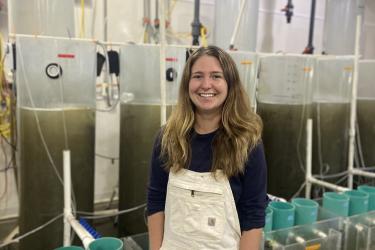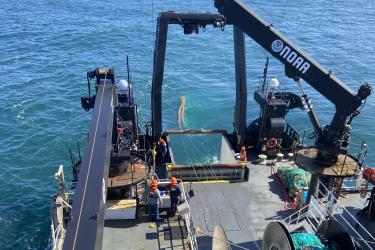While hanging out in the dry lab, waiting for the net to come up, I was chatting with some of my day watch crew. One of them asked me, “What is something you always look forward to seeing when you come out here?” After thinking for a moment, it hit me. I’ve been waiting this entire trip to see some “eyed” Acadian redfish!
Acadian redfish are ovoviviparous. This means their eggs are internally fertilized and hatch inside the female. She then releases live young. Not all fish do this, so we add an extra maturity stage for redfish to describe this condition. It’s called “eyed,” which simply means the larval fish have developed eyes and are one step closer to being spawned. When we sample these fish, the larvae may spill onto the cutting board, and if you pause for a moment, you can see their tails begin to flicker back and forth. This is the only fish we catch where you can witness the larval fish moving around first-hand.
I then asked my fellow sea-going scientists what they most looked forward to seeing, and here are some photos of their faves.
Fan Favorites
Joey Dunphy
Two long slender snipe eels coming down the sorting belt caught Joey Dunphy’s attention. This slender fish has a very thin, elongated jaw. With their mouth open, they’ll move their head back and forth and snag prey, such as shrimp, on their small, hooked teeth.
Maggie Mahoney
Using extreme caution, Maggie Mahoney held up a mighty wolffish. Almost as long as Maggie is tall, this fish has sharp teeth and a powerful jaw. They regrow their teeth annually because crushing their prey—crabs, starfish, sea urchins and clams—causes a lot of wear.
Katie Rogers
Not to be upstaged by the wolffish, Katie Rogers had a photo shoot for this beautiful red-eyed gaper. This fish is a member of a deep-sea anglerfish family. Typically, it is a little more flat, but it has ballooned itself up due to the change in pressure. Also, it’s hard to miss their deep lateral lines running all over their bodies. If there was a fish version of a baseball, this would be it!
Warbler Visits the Ship
Not all interesting animals on the ship live in the ocean. Jon Hare spotted one such visitor, a black throated green warbler. Birds often use the ship as a resting place. I didn’t see this little cutie, but it did remind me of being on land and all the song birds that have come back for the summer.
And then just like that, the 2021 spring bottom trawl survey has ended. Finishing a survey is always bittersweet. On one hand, there’s the adventure of being at sea. Of constantly being reminded of the power and beauty of the ocean and the life it holds. That the ocean plays such an important role in all our lives, all over the world, and it’s worth protecting. And of course, the camaraderie that’s built while sailing with a group of people for several weeks, especially as we successfully navigated this during a pandemic, is really special. It’s sad to see that time end.
On the other hand, coming back home to family and friends, seeing the green trees for the first time this year, smelling the flowers in your garden, listening to the birds, and sleeping in your own bed is simply a wonderful feeling.
2021 Spring Bottom Trawl Survey
Aboard the NOAA Ship Henry Bigelow









